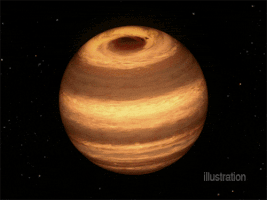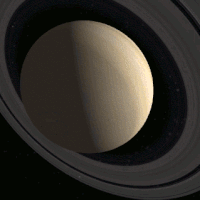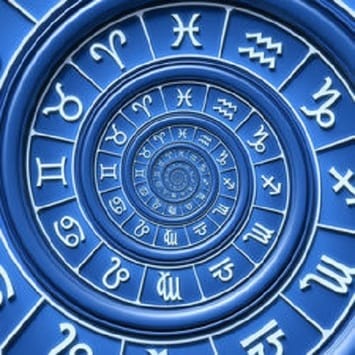Welcome!
Welcome to the Dance of Astrology website! This site is conceived of as a companion to the book The Dance of Astrology, which is available on Amazon. (A click on the website title page will take you there.) This website and the book have much in common in terms of themes and ideas, although they are two separate entities. There is much to explore here in the way of quotes, articles and videos. But the sections are somewhat discrete and isolated. The book, in contrast, contains a large amount of material which does not appear on this website, and in addition attempts to tie the various sections together and to help one make some sense of the connections. The world in sum is not limited or compartmentalized, but is a Whole, and contains all. The dance of astrology is the dance of life. But so are the fellow dances of physics, consciousness, and spirituality. Each dancer needs a partner, and all move together. The real intent of the book that this website refers to is to encourage larger frames of thinking, and to question the paradigms that have been handed down to us.
If the ideas gathered here do intrigue you, the book contains a full 25 pages of additional reading suggestions which will steer you towards other exciting books and minds. The additional readings are divided into five categories. The sections available here on the website using drop-down menus (Physics, Consciousness, Synchronicity, Astrology, and Metaphysics) are the same divisions used in the book. The book itself was given a thumbs-up, positive review by Mary Plumb in The Mountain Astrologer magazine in 2017. In addition, Armand Diaz, writing on the Astrology News Service website, said "The Dance of Astrology is a tremendous book. Douglas Egan has written a most encompassing book on a worldview that supports astrology, and he has done it with stunning clarity... It’s a book that many, many people should read, as it shows why astrology is in concert with an emerging paradigm."
And finally, the general idea is this: if you enjoy the material presented here, then you would probably enjoy The Dance of Astrology.
About the site:
Both the book and this site take on the (possibly) thankless task of trying to appeal to the scientist, the astrologer, and the mystic all at the same time. Is that even possible? You decide. The very nature of an ultimate or over-arching reality indicates that at some level they must cross paths. Where are these intersections? How might we find them? What is the value in looking at life-views outside of our own comfort zones? How can we talk to each other? Should we talk to each other?
The site is comprised of quotes, articles, and videos. Each has its own advantages and disadvantages. The quotes are in many ways ideal for today’s quick-paced world. And while their disadvantage may be a lack of depth in exposition, it is certainly true that “a picture is worth a thousand words.” Sometimes a quote may be also! If they spur more investigation towards an idea or author, then they will have served their purpose. Visually, they are the most fun part of the site.
A caveat:
While the physics quotes were vetted pretty well for accuracy, there were some problems acquiring quotes for the other sections. Specifically, there were two problems. First, there are an amazing amount of quotes out there that are incorrectly attributed. These are real quotes that are simply attached to the wrong person. Second, there is a strong temptation for some people, apparently, to take a good-sounding but possibly made-up or overheard quote and attribute it to someone well-known or important in order to achieve gravitas. The primary recipients of these sloppily sourced quotes tend to be Einstein, Buddha, or Lao-Tzu. There is a lot of iffy stuff floating around out there. In fact, there is even a term for this, at least as far as the Eastern quotes go: “Buddish.” So these have been kept to a very small minimum, but occasionally one of these suspicious quotes is too good in itself to pass up. There is ultimately something to be said for the idea that “wisdom is where you find it.”
(BTW, for those who like to dig, here's a site that does tireless fact checking regarding quotes. The quote linked to here is a great quote in itself, and also demonstrates the blog author's exhaustive search for the truth):
http://www.quoteinvestigator.com/2012/05/06/other-plans/
The joy of articles is that they can be in-depth, and actively involve the reader. They make our minds work. Thus, one can sort through ideas and mull things over as they read. The articles here are not always meant to present any particular viewpoint: in fact, it is often instructive to be presented with more than one viewpoint. Life is complicated, and our views of life are constantly changing. It’s good to be part of the flow, of the quest for knowledge and truth. It’s good to be humble. If we are stuck in a particular idea, then we are not open to the universe. There’s a lot more scenery off in the distance than we can typically see from the road we’re on.
Videos are fun to watch, as we often get to see our “heroes” in live action. But they also present several problems. The first is that they are often time-consuming, a premium in today’s world. We love our favorite guru, _______, but do we really have the patience to sit and watch them talk for 2 hours? At least with articles (like books), one can more easily stop and resume, skim, or move on to the next one. And videos (like television shows) are more passive. One does not have as much opportunity (as one might with an article) to interact with and digest the information as it flies by. One is more consuming information than interacting with information.
Another problem with videos is that with articles or books, the author has had the time to carefully re-read and re-work what they want to say, so that it tends to be a truer and more complete expression of their thinking. In a video, they may forget to touch on important points, get flustered, not look as wise or attractive as we had envisioned them to be, etc. Lastly, perhaps the biggest problem with videos is that anyone with a computer or smartphone may attach their frequently not insightful, and often unpleasant and argumentative comments below the video. (This also happens to a lesser extent at times with articles.) One might here develop a valuable practice of ignoring any comments below the videos and making up their own minds. At any rate, regarding quotes, articles, and videos: everyone will have their preference here.
About the Physics sections:
One of the points of this website and of The Dance of Astrology is that there is likely to be at some point a formulation of physics which, in one way or another, includes the mysterious effects of consciousness in the physical world. Many current physicists will not agree with this at all, but the fact is that this question remains sitting in the living room of physics, large and gray. Like astrology, many scientists wish that it would go away, but like astrology, it won’t. The reasons are somewhat obscure to the average person, but have everything to do with how the very real and verified findings of quantum mechanics are interpreted, and what they seem to hint at. The original quantum innovators were very much willing to entertain the question of consciousness. There was also a second wave of receptivity to this sort of thinking in the 1970’s amongst the small but not-insignificant faction of physicists (some of whom won Nobel prizes) detailed in the excellent book How the Hippies Saved Physics. There is no doubt that we will see another wave of interest at some point. It’s just too tantalizing. So the question, like it or not, is not going away. And what a question it is!
About the Metaphysics sections:
There is much wisdom and beauty the world over through various cultures’ spiritual traditions. Here, on this website however, Eastern traditions dominate Western ones for two reasons. First, the point here is precisely the Oneness of life, truth, and the universe. It is that of the inseparable connectedness of everything. This is exactly the base orientation of all Eastern wisdom traditions or religions: that of non-duality, of the linked and continuous expressions of an unbroken ground. That goes back many thousands of years. The Western traditions and religions, in contrast, are built on the assumptions of duality, disconnection, and separateness. That is true whether we are talking philosophy or physics, although physics is currently confronting a sea-change in this regard. These are key and important distinctions, and have informed the choice of spiritual or metaphysical selections here, just as they have informed the choice of physics selections. Apologies are made to the West, because, again, there is much wisdom there also.
The second reason that there is more of an Eastern slant here is simply because those traditions and religions seem more open and flexible to modern scientific progress: they are not as hung up on dogma and rigid beliefs and stories that are having difficulty keeping their relevance in the modern world. The meanings of many Western stories may hold their importance, but the stories themselves often seem anachronistic or contrived. Symbolically they do better, but many people want to continue to cling to them literally. This sets up additional dualities, barriers, and conflicts. (The mystics of the Western religions seem to have done better here at bridging the gap with the East.) In regards to the tension between science and spirituality, see the Dalai Lama quote that if science at some point proves something incorrect about Buddhism, then Buddhism is ready and willing to change. What a fresh perspective that is! There is only one reality. New information should lead to new understandings. There is also an Einstein quote in the Metaphysics section regarding this same compatibility of Buddhism with the modern world. And there are numerous quotes showing the interest that modern physicists have taken regarding Hinduism. As we move into the Age of Aquarius, these are things to think about. The general thrust of the East is that reality is what it is, and open-mindedness towards explorations of where this search may lead are what is important. In addition, and completely aside from the East/West issue, there are certain quotes that simply fall into the category of timeless human truths. These also appear.
About the Astrology sections:
For the non-astrologers: Stay open-minded. Investigate a little on your own rather than relying on hearsay or pre-conceived notions. Astrology is not going away, simply because too many people find something there. As a tool for self-knowledge, there is simply nothing else that can come close. As a tool for questioning and standing in wonder at the mysteries of the universe and of reality, it stands as tall as any other discipline, and taller than most. The world has not yet been figured out. We’re all still just babes in the woods. We need to keep our eyes and ears open for clues.
For the astrologers: The articles and videos presented here are a sprawling panoply, simply because modern astrology is a sprawling panoply of various and occasionally contradictory viewpoints. The lack of a dogmatic, accepted, and finally settled body of astrological knowledge is both a blessing and a curse. It’s a blessing because it keeps the discipline fresh and questioning, trying out new ideas, techniques, and interpretations. It’s a curse because it often means that several astrologers might look at the same information and come to somewhat different conclusions. That’s OK.
It’s important not to over-emphasize the differences, however. The commonalities far outweigh them. Astrologers’ interpretations are normally not that different; there are far more generally accepted similarities of interpretation than otherwise. And kudos to those astrologers and astrological organizations that are working tirelessly to standardize much of astrological knowledge. Kudos as well to such publications as The Mountain Astrologer that serve as clearinghouses to keep the fresh dissemination of astrological ideas in motion. This website and the book generally take a fairly minimalist, meat-and-potatoes approach to all matters astrological, although the various articles may present other viewpoints. But what a fascinating discipline we have! What other profession or avocation addresses such weighty issues as fate vs. free will on a daily basis? How can one not be enthralled?
Hopefully, none of this has scared you off yet. There is much material here to browse. Take what you like and leave the rest. Wisdom and the search for truth cover a lot of ground. Most of us at best are only privy to seeing small pieces. Whatever pieces you find that you can use, you’re welcome to. Enjoy!
The site is comprised of quotes, articles, and videos. Each has its own advantages and disadvantages. The quotes are in many ways ideal for today’s quick-paced world. And while their disadvantage may be a lack of depth in exposition, it is certainly true that “a picture is worth a thousand words.” Sometimes a quote may be also! If they spur more investigation towards an idea or author, then they will have served their purpose. Visually, they are the most fun part of the site.
A caveat:
While the physics quotes were vetted pretty well for accuracy, there were some problems acquiring quotes for the other sections. Specifically, there were two problems. First, there are an amazing amount of quotes out there that are incorrectly attributed. These are real quotes that are simply attached to the wrong person. Second, there is a strong temptation for some people, apparently, to take a good-sounding but possibly made-up or overheard quote and attribute it to someone well-known or important in order to achieve gravitas. The primary recipients of these sloppily sourced quotes tend to be Einstein, Buddha, or Lao-Tzu. There is a lot of iffy stuff floating around out there. In fact, there is even a term for this, at least as far as the Eastern quotes go: “Buddish.” So these have been kept to a very small minimum, but occasionally one of these suspicious quotes is too good in itself to pass up. There is ultimately something to be said for the idea that “wisdom is where you find it.”
(BTW, for those who like to dig, here's a site that does tireless fact checking regarding quotes. The quote linked to here is a great quote in itself, and also demonstrates the blog author's exhaustive search for the truth):
http://www.quoteinvestigator.com/2012/05/06/other-plans/
The joy of articles is that they can be in-depth, and actively involve the reader. They make our minds work. Thus, one can sort through ideas and mull things over as they read. The articles here are not always meant to present any particular viewpoint: in fact, it is often instructive to be presented with more than one viewpoint. Life is complicated, and our views of life are constantly changing. It’s good to be part of the flow, of the quest for knowledge and truth. It’s good to be humble. If we are stuck in a particular idea, then we are not open to the universe. There’s a lot more scenery off in the distance than we can typically see from the road we’re on.
Videos are fun to watch, as we often get to see our “heroes” in live action. But they also present several problems. The first is that they are often time-consuming, a premium in today’s world. We love our favorite guru, _______, but do we really have the patience to sit and watch them talk for 2 hours? At least with articles (like books), one can more easily stop and resume, skim, or move on to the next one. And videos (like television shows) are more passive. One does not have as much opportunity (as one might with an article) to interact with and digest the information as it flies by. One is more consuming information than interacting with information.
Another problem with videos is that with articles or books, the author has had the time to carefully re-read and re-work what they want to say, so that it tends to be a truer and more complete expression of their thinking. In a video, they may forget to touch on important points, get flustered, not look as wise or attractive as we had envisioned them to be, etc. Lastly, perhaps the biggest problem with videos is that anyone with a computer or smartphone may attach their frequently not insightful, and often unpleasant and argumentative comments below the video. (This also happens to a lesser extent at times with articles.) One might here develop a valuable practice of ignoring any comments below the videos and making up their own minds. At any rate, regarding quotes, articles, and videos: everyone will have their preference here.
About the Physics sections:
One of the points of this website and of The Dance of Astrology is that there is likely to be at some point a formulation of physics which, in one way or another, includes the mysterious effects of consciousness in the physical world. Many current physicists will not agree with this at all, but the fact is that this question remains sitting in the living room of physics, large and gray. Like astrology, many scientists wish that it would go away, but like astrology, it won’t. The reasons are somewhat obscure to the average person, but have everything to do with how the very real and verified findings of quantum mechanics are interpreted, and what they seem to hint at. The original quantum innovators were very much willing to entertain the question of consciousness. There was also a second wave of receptivity to this sort of thinking in the 1970’s amongst the small but not-insignificant faction of physicists (some of whom won Nobel prizes) detailed in the excellent book How the Hippies Saved Physics. There is no doubt that we will see another wave of interest at some point. It’s just too tantalizing. So the question, like it or not, is not going away. And what a question it is!
About the Metaphysics sections:
There is much wisdom and beauty the world over through various cultures’ spiritual traditions. Here, on this website however, Eastern traditions dominate Western ones for two reasons. First, the point here is precisely the Oneness of life, truth, and the universe. It is that of the inseparable connectedness of everything. This is exactly the base orientation of all Eastern wisdom traditions or religions: that of non-duality, of the linked and continuous expressions of an unbroken ground. That goes back many thousands of years. The Western traditions and religions, in contrast, are built on the assumptions of duality, disconnection, and separateness. That is true whether we are talking philosophy or physics, although physics is currently confronting a sea-change in this regard. These are key and important distinctions, and have informed the choice of spiritual or metaphysical selections here, just as they have informed the choice of physics selections. Apologies are made to the West, because, again, there is much wisdom there also.
The second reason that there is more of an Eastern slant here is simply because those traditions and religions seem more open and flexible to modern scientific progress: they are not as hung up on dogma and rigid beliefs and stories that are having difficulty keeping their relevance in the modern world. The meanings of many Western stories may hold their importance, but the stories themselves often seem anachronistic or contrived. Symbolically they do better, but many people want to continue to cling to them literally. This sets up additional dualities, barriers, and conflicts. (The mystics of the Western religions seem to have done better here at bridging the gap with the East.) In regards to the tension between science and spirituality, see the Dalai Lama quote that if science at some point proves something incorrect about Buddhism, then Buddhism is ready and willing to change. What a fresh perspective that is! There is only one reality. New information should lead to new understandings. There is also an Einstein quote in the Metaphysics section regarding this same compatibility of Buddhism with the modern world. And there are numerous quotes showing the interest that modern physicists have taken regarding Hinduism. As we move into the Age of Aquarius, these are things to think about. The general thrust of the East is that reality is what it is, and open-mindedness towards explorations of where this search may lead are what is important. In addition, and completely aside from the East/West issue, there are certain quotes that simply fall into the category of timeless human truths. These also appear.
About the Astrology sections:
For the non-astrologers: Stay open-minded. Investigate a little on your own rather than relying on hearsay or pre-conceived notions. Astrology is not going away, simply because too many people find something there. As a tool for self-knowledge, there is simply nothing else that can come close. As a tool for questioning and standing in wonder at the mysteries of the universe and of reality, it stands as tall as any other discipline, and taller than most. The world has not yet been figured out. We’re all still just babes in the woods. We need to keep our eyes and ears open for clues.
For the astrologers: The articles and videos presented here are a sprawling panoply, simply because modern astrology is a sprawling panoply of various and occasionally contradictory viewpoints. The lack of a dogmatic, accepted, and finally settled body of astrological knowledge is both a blessing and a curse. It’s a blessing because it keeps the discipline fresh and questioning, trying out new ideas, techniques, and interpretations. It’s a curse because it often means that several astrologers might look at the same information and come to somewhat different conclusions. That’s OK.
It’s important not to over-emphasize the differences, however. The commonalities far outweigh them. Astrologers’ interpretations are normally not that different; there are far more generally accepted similarities of interpretation than otherwise. And kudos to those astrologers and astrological organizations that are working tirelessly to standardize much of astrological knowledge. Kudos as well to such publications as The Mountain Astrologer that serve as clearinghouses to keep the fresh dissemination of astrological ideas in motion. This website and the book generally take a fairly minimalist, meat-and-potatoes approach to all matters astrological, although the various articles may present other viewpoints. But what a fascinating discipline we have! What other profession or avocation addresses such weighty issues as fate vs. free will on a daily basis? How can one not be enthralled?
Hopefully, none of this has scared you off yet. There is much material here to browse. Take what you like and leave the rest. Wisdom and the search for truth cover a lot of ground. Most of us at best are only privy to seeing small pieces. Whatever pieces you find that you can use, you’re welcome to. Enjoy!
Bio:






